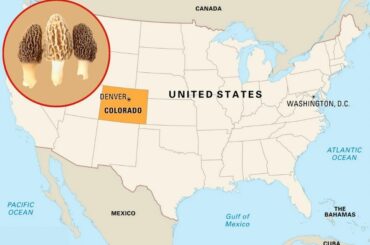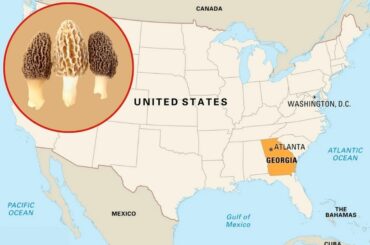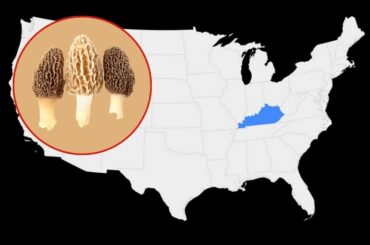Mushroom casing soil and mushroom compost have different functions to help the growth of mushrooms. The substrate acts as a nutrient supplier to the growing mushrooms while the casing layer provides moisture. With enough moisture and nutrients, mushrooms can grow efficiently.
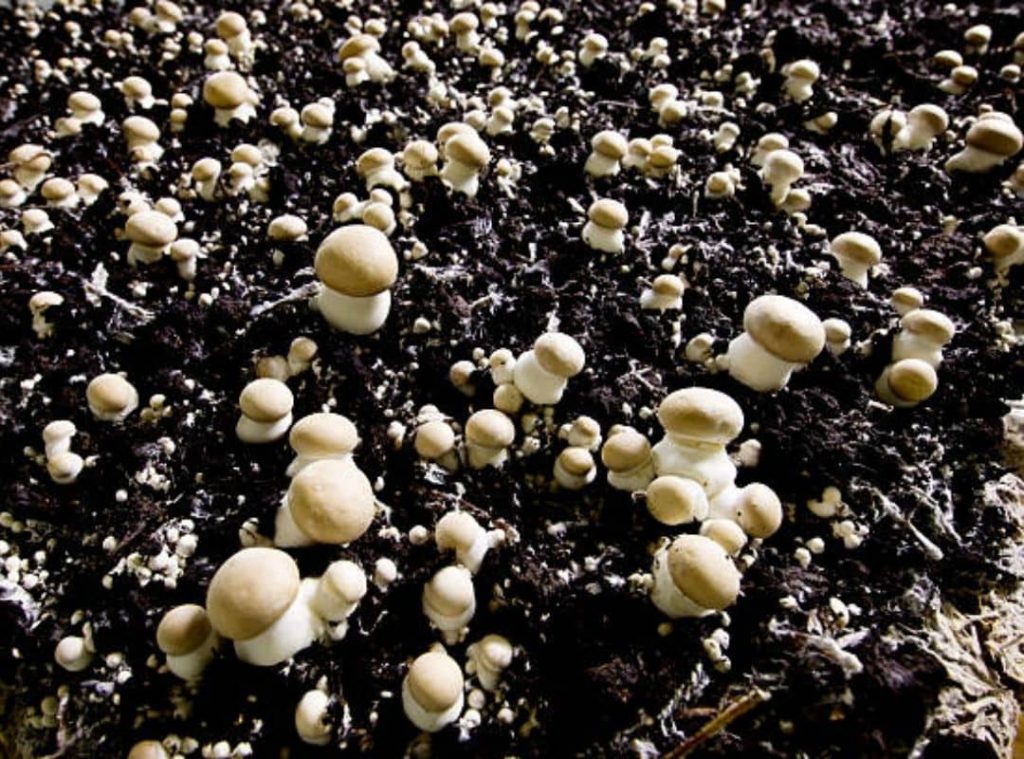
What is mushroom casing soil?
Contents
Many years ago, ancient mushroom farmers used compost as we do today. By experience, they understood that when they added a layer of organic matter on top of the compost, the yield would bloom. This layer is called casing soil. Casing soil is used to maintain moisture in the substrate and acts as a water reservoir. Hence the casing soil can regulate the water percentage inside the substrate.
Moisture is very important for the growth of mushrooms. When you add casing soil on top, the substrate gets adequately moistened and increases the growth of the mushrooms. Mushroom farmers in different countries use different types of casing materials. Most commonly, peat is used as casing soil in many practices. Peat is made up of partially decomposed organic matter. Since the decaying process is very slow, you have to wait thousands of years to make peat naturally. Luckily, we have enough peatlands all over the world.
Importance of mushroom casing soil
The main function of the mushroom casing soil is to give enough moisture to the substrate. Casing soil can absorb water and water can also be released from the casing soil through evaporation. Mushroom casing soil acts as a water reservoir for the substrate, as humidity is very important for the growth of mushrooms. Casing soil can give a natural color to the mushroom. Therefore casing is used in most mushroom growing practices all over the world.
Rhizomorphs form in the casing soil. When the very fine mycelium fuses together, rhizomorphs appear as thick strings. Mushrooms originate from these rhizomorphs. Because of that, forming rhizomorphs is a very important step in the process.
Characteristics of a good mushroom casing soil
A good casing should have more pore space percentage and good water retaining capacity, so it can offer a consistent humid environment to the substrate. A slightly alkaline pH is ideal for better performance. Another important factor is that a good casing should be capable of releasing hazardous gasses during cropping. Properly decomposed casing soil without harmful microorganisms, heavy metals and ions is ideal for mushroom growth.
How to prepare mushroom casing soil
Peat and vermiculture are used as the main ingredients in most types of casings. You can use a 50-50 mixture of peat and vermiculture. First, add Peat and vermiculture into a container. A 50-50 mixture of peat and vermiculture is ideal for this purpose. Then mix the two samples of peat and vermiculture well. Followed by that you should add water to this mixture. Be careful when you add water to the mixture.
Both less and too much water will not make you a good casing soil. Take a handful of the mixture, and squeeze it, if you hardly obtain some drops of water, the soil has enough water. After that, pasteurization is the next step. Add the mixture to a polythene bag and place it in the pressure cooker to increase the temperature. A probe thermometer can be used to find the temperature in the middle of the sample.
The temperature in the middle of the sample should reach somewhere between 65-80 0C. You should maintain the temperature for about 30 minutes. After pasteurization, take the polythene bag out of the pressure cooker and allow it to cool. You should cool the casing soil to room temperature before adding it to the substrate.
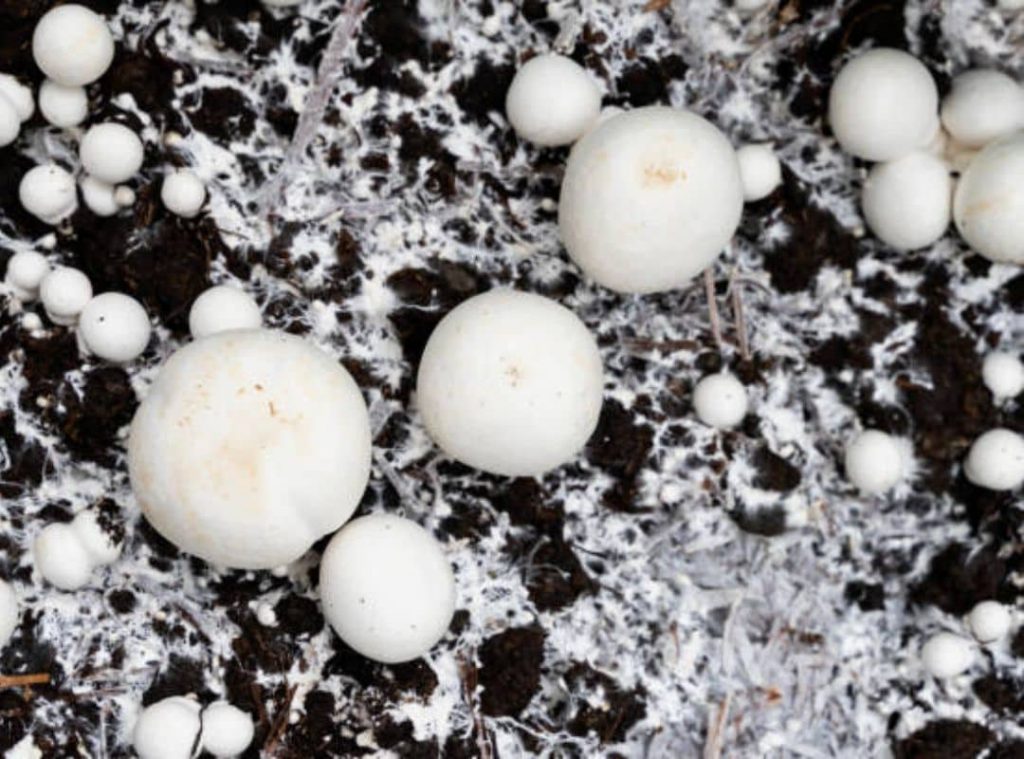
How to sterilize mushroom casing soil
Before introducing the casing soil on the top of the substrate, it should be sterilized. Sterilizing is a very important step in this process because it can kill the pests and harmful microorganisms in the casing soil.
If pests or harmful microorganisms are present in the casing soil, it can contaminate the substrate and can be a great loss because you have to destroy the contaminated substrate. There are two methods you can use to sterilize the casing soil; chemical treatment and pasteurization.
The chemical treatment of casing soil
Here we are using formaldehyde. First, you should prepare a formaldehyde solution. Mix 2 liters of formaldehyde with 4 liters of water to obtain a formaldehyde 2% solution. Make the casing soil into a rectangular pile. Then soak it with the formaldehyde solution and secure it with a polythene sheet.
Pasteurization
In large farms’ pasteurization, rooms are used for this purpose. When you are doing small-scale mushroom farming, you can use a pressure cooker to sterilize.
Large scale farming
Large-scale mushroom growers are using pasteurization rooms to sterilize the casing. First, casing soil is filled in trays and they are stocked in the pasteurization room. Steam is used to increase the temperature. The temperature of casing soil should increase up to 65-70 0C and maintain for at least 6 to 8 hours. At this temperature, all the harmful microorganisms are killed. Most of the useful microorganisms are not killed at this temperature which is important for the casing soil to get the best results.
Small scale farming
You can use a pressure cooker for small-scale farming of mushrooms. First, you should add the casing soil to a polythene bag and place it in the pressure cooker for the high-temperature treatment. A probe thermometer can be used to find the temperature of the middle of the sample. The temperature in the middle of the sample should reach somewhere between 65-80 0C. You should maintain the temperature for about 30 minutes.
Mushroom casing vs substrate
Mushroom casing and substrate have different functions to fulfill the needs of growing mushrooms. Casing soil is used to retain moisture in the substrate, therefore it is not necessary to add nutrients into the casing soil. Mushrooms are highly dependent on moisture. Hence, the casing should give constant moisture supply to the substrate in order to maintain enough water supply for the mushroom growth. Mushrooms originate from rhizomorphs. Rhizomorphs form inside the casing soil and grow into the substrate.
Substrate gives all the important nutrients to the mushrooms. With enough moisture and nutrients, mushrooms can grow quickly and in a healthy manner. Both the substrate and the casing are needed to build a fine mushroom growing facility. Lack of either one of these may not give you encouraging results.
When to add casing layer
The process of mushroom farming can be divided into five steps.
- Composting
- Spawning
- Casing
- Pining
- Cropping
First, you should make the mushroom compost. After completing the making of compost, the next step is spawning. You can buy mushroom spawn from the market and use it for spawning purposes. Then you should mix the spawn thoroughly with the mushroom compost. Make sure to maintain proper temperature and humidity to ensure the growth of mycelium. Then the spawn will grow and you can see the spawn appearing as a thread-like network.
After the spawning is complete, you can do the casing. It requires 14 to 21 days to complete the spawning depending on the variety of mushrooms. After that, you can add the casing layer on top of the compost. With a proper supply of humidity and temperature, you will have harvestable mushrooms, after 18 to 21 days of the casing.
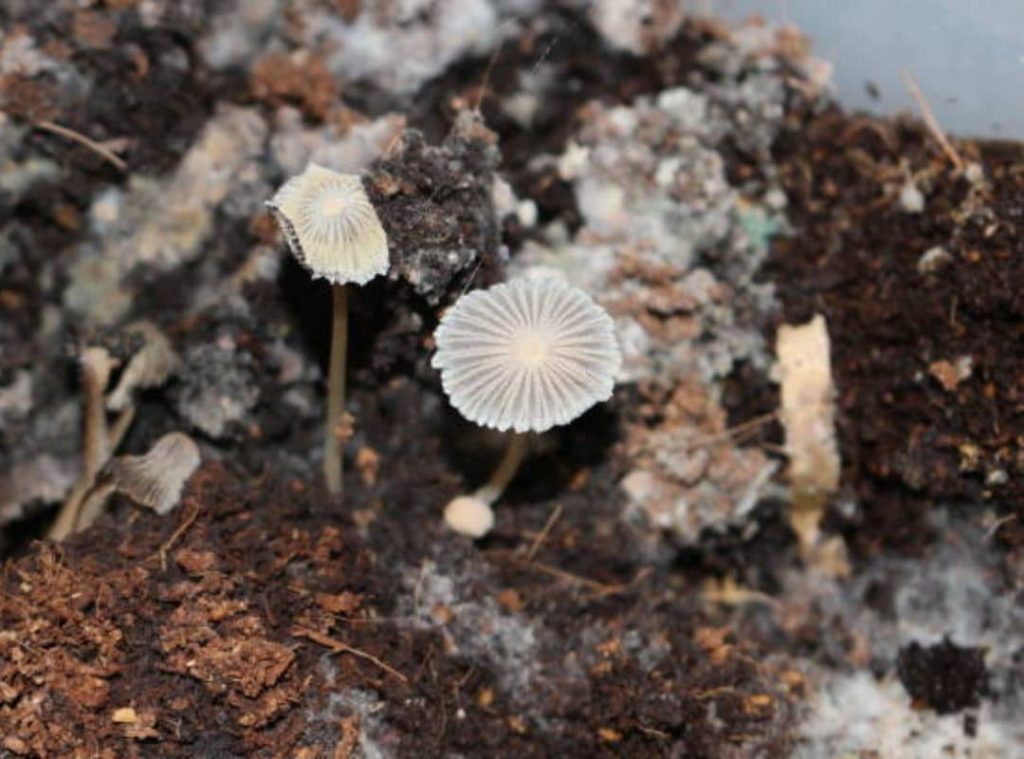
Why is casing important in soil?
The casing layer is very important for the production of mushrooms. It can increase the growth of mushrooms effectively without any negative effects. The casing layer can hold a huge amount of water and it allows evaporation as well. Various sizes of pores inside the casing layer give this unique characteristic of water holding capacity. As a result, the casing gives enough moisture to the mushroom compost.
Final Thoughts
Mushroom farmers use casing soil to get a decent growth of mushrooms. Higher moisture content is needed for the growth of mushrooms. The Casing layer has hundreds and thousands of micropores that can give it its special water holding capacity. Because of the higher water holding capacity, the casing layer can provide moisture to the mushroom compost.
The casing layer is the place where rhizomorphs are formed. Without rhizomorphs, you cannot get any mushroom growth. A good casing should have more pore space percentage and good water retaining capacity. A good casing soil should not contain any harmful microorganisms. You can make good casing soil with a 50-50 mixture of peat and vermiculture. You have to sterilize the casing soil before using it. You can sterilize it by using chemical treatment or pasteurization. According to the size of your mushroom farm, the pasteurization process can be varied.
Large-scale farmers are using pasteurizing rooms for sterilizing the casing soil. You can use a pressure cooker for pasteurization if you are a small-scale farmer. In the pasteurization process, you have to maintain 65-80 0C of temperature in the middle of the casing soil sample. You need to sterilize both the casing and the mushroom compost before using. If not, they can contaminate the mushroom culture.
Read Next : Growing Mushrooms In Closet (Can You?)

